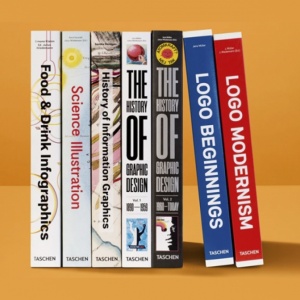Roy Lichtenstein. 1923-1997. The Irony of the Banal: Janis Hendrickson
When art went Whaam!
American painter Roy Lichtenstein (1923–1997) pioneered a new epoch in American art, bursting onto a scene dominated by Abstract Expressionism in late 1950s New York and defining a new art vocabulary for a new era.
With his groundbreaking use of industrial prod
American painter Roy Lichtenstein (1923–1997) pioneered a new epoch in American art, bursting onto a scene dominated by Abstract Expressionism in late 1950s New York and defining a new art vocabulary for a new era.
With his groundbreaking use of industrial prod
Полная аннотация
Все характеристики
Аннотация
When art went Whaam!
American painter Roy Lichtenstein (1923–1997) pioneered a new epoch in American art, bursting onto a scene dominated by Abstract Expressionism in late 1950s New York and defining a new art vocabulary for a new era.
With his groundbreaking use of industrial production techniques and trivial, quotidian imagery such as cartoons, comic strips, and advertising, Lichtenstein joined contemporaries such as Andy Warhol and James Rosenquist to reflect and satirize American mass media and consumer culture. Works such as Look, Mickey! (1961), Drowning Girl (1963), and Whaam! (1963) deployed mass production techniques, particularly Ben-Day dots printing, to create a blow-up effect and pixelated “dot” style, with which Lichtenstein has become synonymous.
This book provides an essential overview of Lichtenstein’s career, tracing his earliest Pop statements through to later “brushstroke” retorts to Abstract Expressionism and reinterpretations of modern masterpieces. We look at his leading position in midcentury modernism, and the ways in which his works both critique and chronicle 20th-century America.
American painter Roy Lichtenstein (1923–1997) pioneered a new epoch in American art, bursting onto a scene dominated by Abstract Expressionism in late 1950s New York and defining a new art vocabulary for a new era.
With his groundbreaking use of industrial production techniques and trivial, quotidian imagery such as cartoons, comic strips, and advertising, Lichtenstein joined contemporaries such as Andy Warhol and James Rosenquist to reflect and satirize American mass media and consumer culture. Works such as Look, Mickey! (1961), Drowning Girl (1963), and Whaam! (1963) deployed mass production techniques, particularly Ben-Day dots printing, to create a blow-up effect and pixelated “dot” style, with which Lichtenstein has become synonymous.
This book provides an essential overview of Lichtenstein’s career, tracing his earliest Pop statements through to later “brushstroke” retorts to Abstract Expressionism and reinterpretations of modern masterpieces. We look at his leading position in midcentury modernism, and the ways in which his works both critique and chronicle 20th-century America.
Свернуть
Характеристики
ID товара
1009545
ISBN
9783836532075
Язык
Английский
Страниц
96 (Мелованная)
Вес
600 г
Размеры
265x215x15 мм
Тип обложки
7Б - твердая (плотная бумага или картон)
Оформление
Частичная лакировка
Иллюстрации
Черно-белые + цветные
Все характеристики
3 151
Рецензии на книгу
Читали книгу? Как она вам?
+50 ₽ за рецензию
Вы можете стать одним из первых, кто напишет рецензию на эту книгу, и получить бонус — до 50 рублей на баланс в Лабиринте!
Покупатели 0
Эксперты 1
Книги из жанра
2 4564 911 -50% Еще 4 дня
Что читать вместе с книгой "Roy Lichtenstein. 1923-1997. The Irony of the Banal"

Taschen. От магазина комиксов до книжного бренда класса люкс
Ноябрь 2023 •  6 934
6 934


